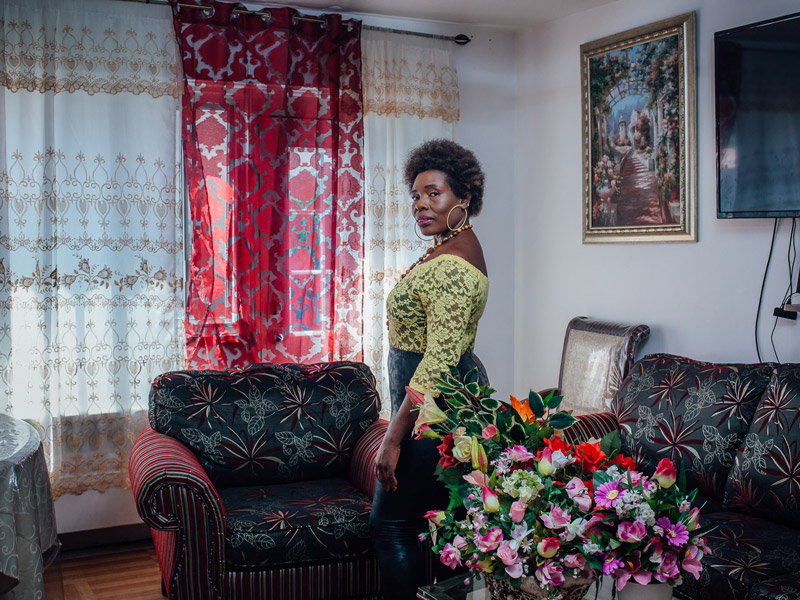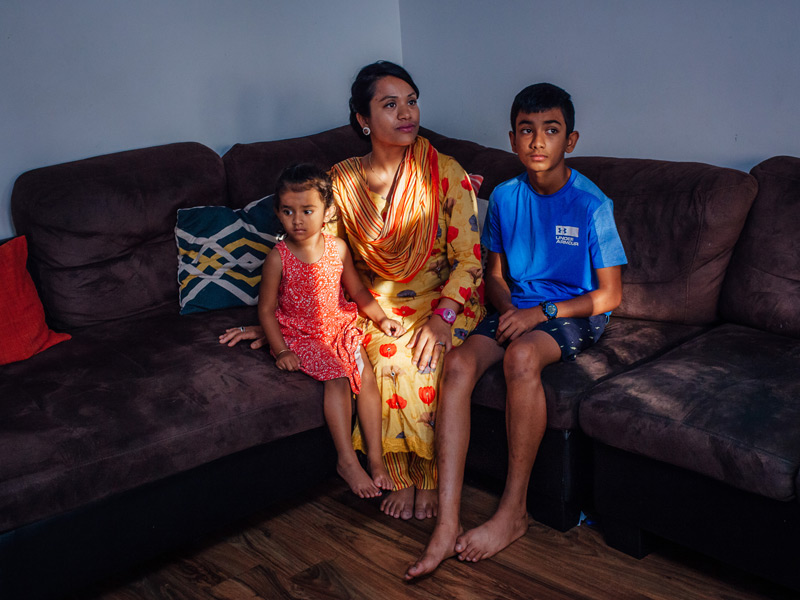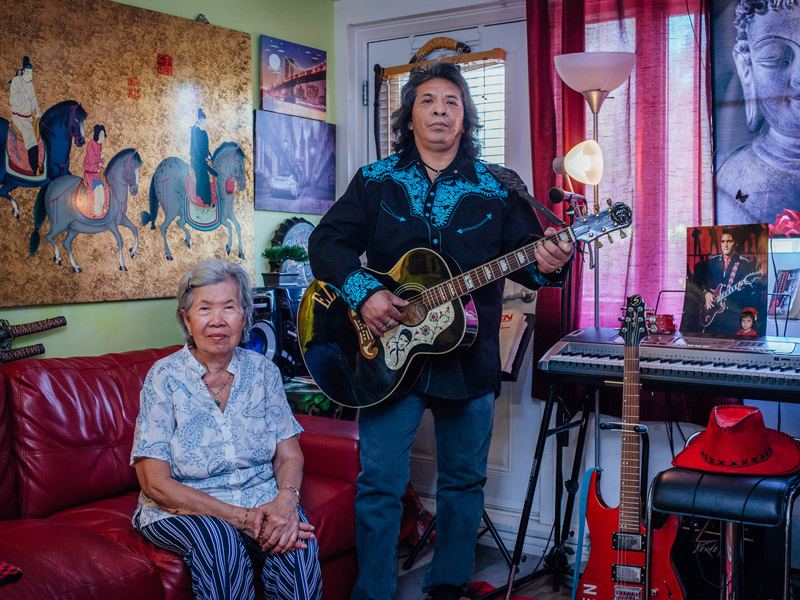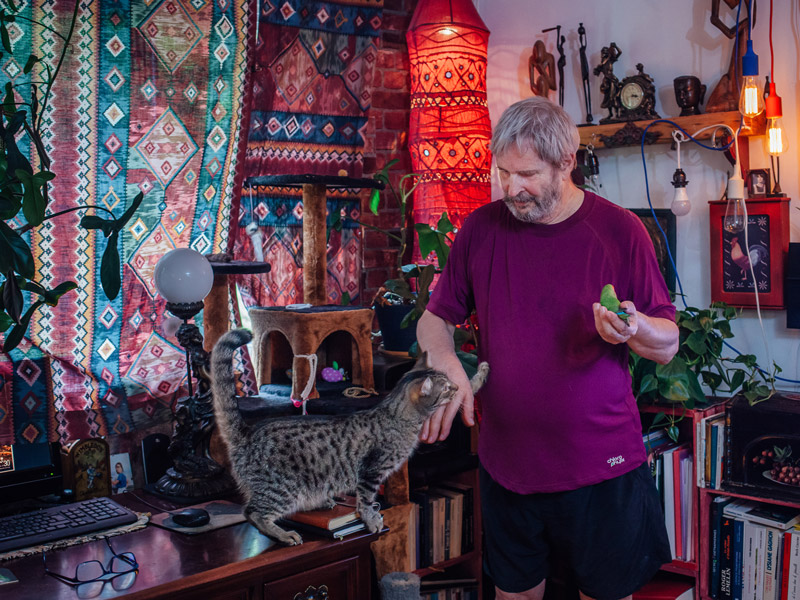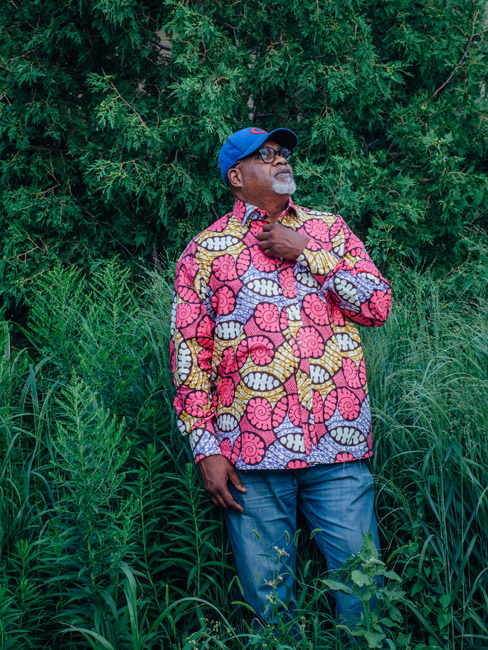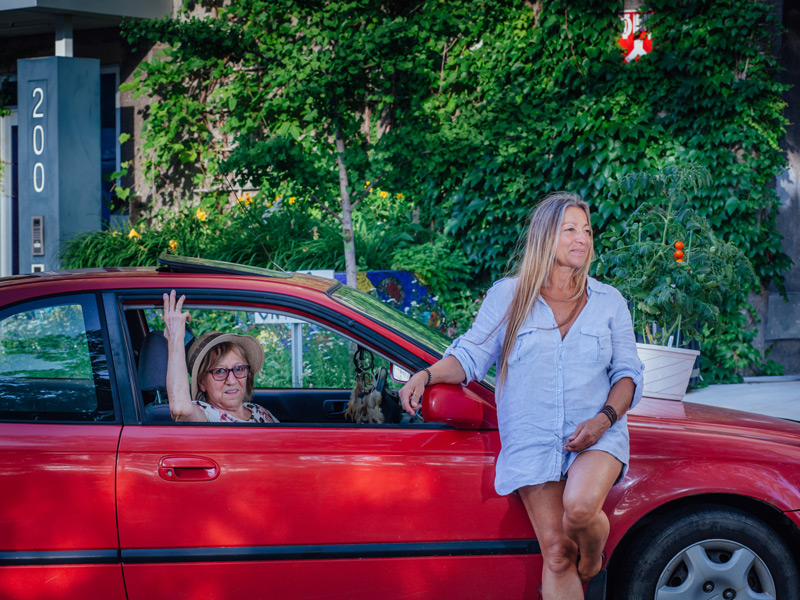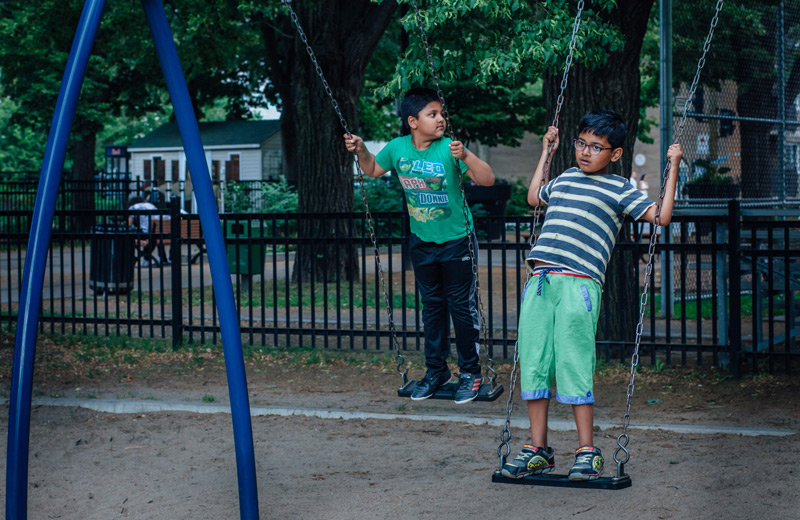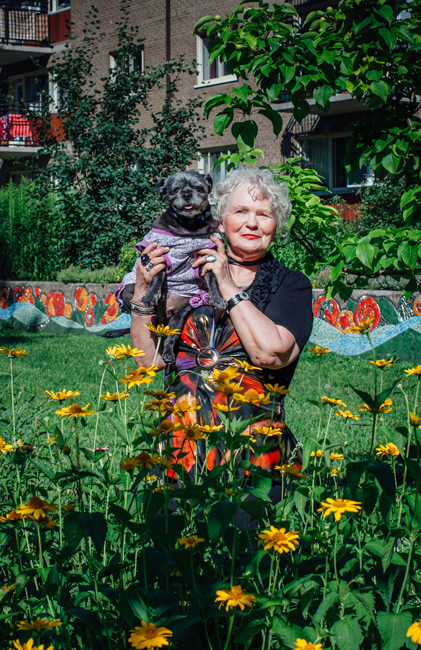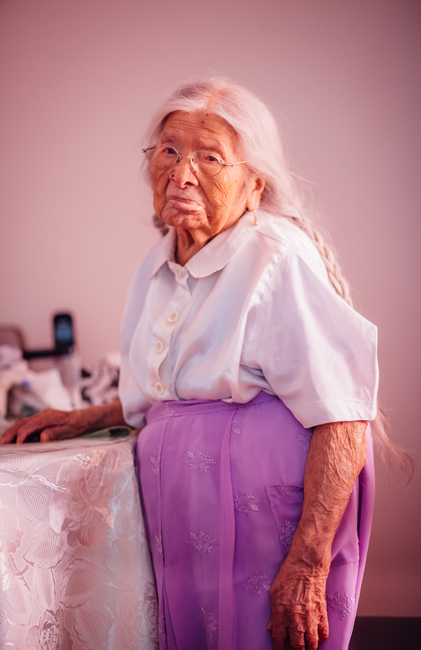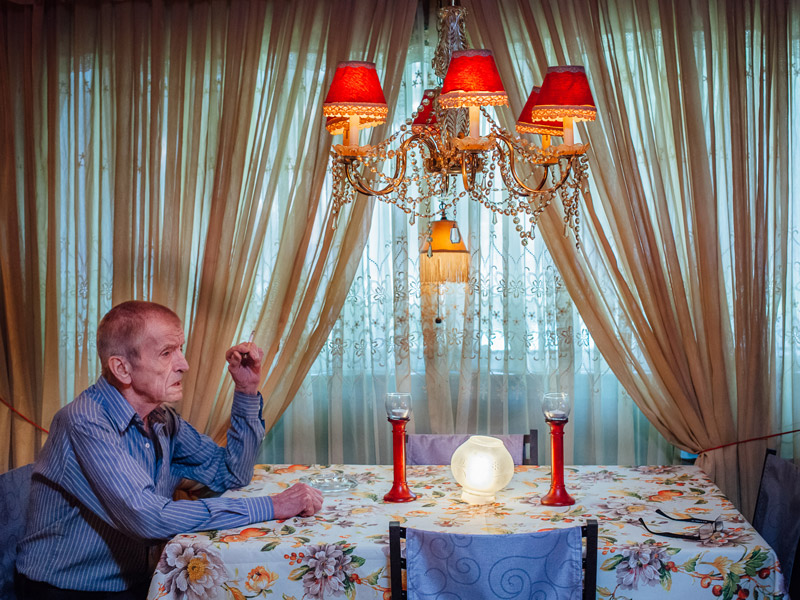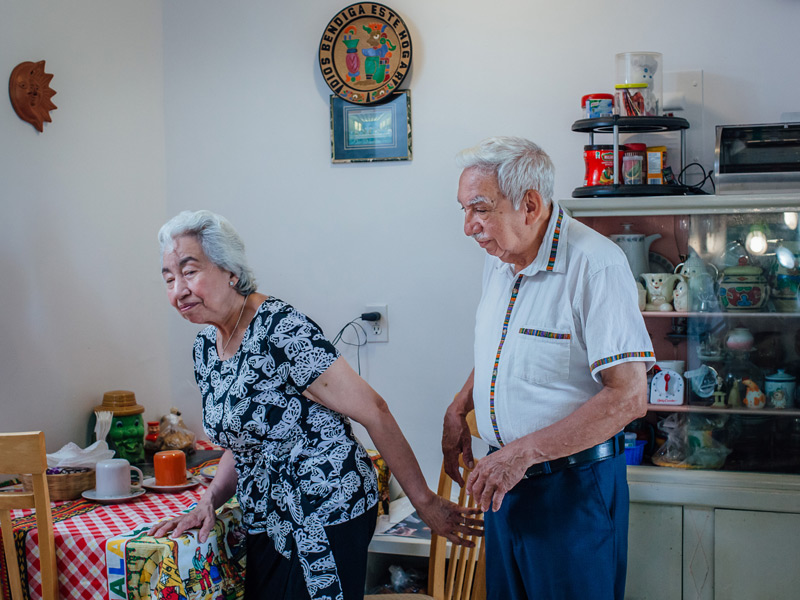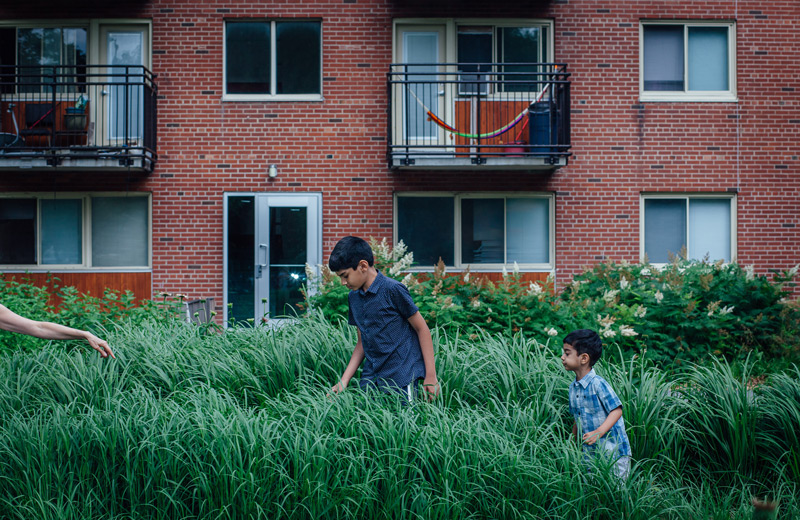[October 27, 2020]
By Sophie Bertrand
One summer, photojournalist Valérian Mazataud was invited to photograph the tenants of the Corporation d’habitation Jeanne-Mance, situated in downtown Montreal. Mazataud saw this as more than a commission; it was a photographic mission that would enable him to encounter the different Montreal communities residing in what was dubbed “Le plan”[1], the nickname of the original housing project proposed in 1954 by Paul Dozois to revitalize the Faubourg Saint-Laurent district and provide decent low-income housing.[2]
Since he began his documentary practice, in 2009, Mazataud has focused his reportages on close encounters, the humanist legacy of a bike trip around the world during which he literally clowned around for thousands of kilometres, before turning to photojournalism. Today an independent photographer and regular contributor of long-format reports to newspapers and international magazines, Mazataud was thrilled to be asked to produce this corpus of more than sixty portraits to mark the sixtieth anniversary of this model of social housing. Having joined the staff of the newspaper Le Devoir in 2018, for which he had produced, among other things, numerous portrait commissions, he found this initiative to be a direct reflection of his professional practice and of the angle that he had chosen to explore: documenting stories in Quebec and elsewhere. Based in Montreal for ten years, he had already undertaken local projects, such as the series Grand Nord, produced between 2012 and 2018 on neighbourhoods and residents in northern Montreal.
Throughout summer 2019, Mazataud wandered the labyrinthine hallways of the Habitations Jeanne-Mance site and immersed himself in the stories of the volunteers who had agreed to open their doors to him and pose proudly for his camera. His array of portraits – of single-parent and multi-generational families, retirees, and single people – transcribes the history of this unique and constantly evolving place, occupied by people whose roots are in seventy different countries. The interior photographs transform living rooms or kitchens into photography studios, offering a glimpse of decorative elements that reveal multiple identities, and the pictures taken outdoors present an environment of greenery replete with a sense of “good living” and plenitude. Initiated by the directors of the Corporation d’habitation Jeanne-Mance, the unusual project gives a glimpse of daily life in this little “green lung” of downtown Montreal through the mosaic of faces that make up its multicultural and proactive identity.
An exhibition of the photographs within the site was the initial project to honour its residents, but the idea of a book quickly occurred to both Mazataud and the project organizers, as the success of the exhibition pointed to the need to bring the images together in a more permanent form. Although the book was designed originally to be offered to participants, it is now available for documentation and archival purposes. The photobook, interspersed with personal statements, bears witness to an atypical community reality within an urban oasis in the heart of the city. The gentle, sincere portraits let the sense of belonging and pride that the residents seem to share shine through. Somewhere between sociological study and photo album, Le plan brings to mind forms of urbanization that encourage people to live together in overcrowded cities and encourages reflection on the social cohesion between demography and urban planning.
With support from the Montreal Museum of Fine Arts, Le plan was launched in winter 2020 at the museum, with the residents of Habitations Jeanne-Mance as guests. Although it is not available for sale, the book can be consulted in various Montreal libraries and upon request.[3]
[1]See the project report in the City of Montreal archives: https://archivesdemontreal.ica-atom.org/rapport-depose-au-comite-executif-19-septembre-1954.
[2] Projet de rénovation d’une zone d’habitat défectueux et de construction d’habitation à loyer modique (Project for Renovation of a Defective Housing Zone and Construction of Low-income Housing). Paul Dozois was, among other things, a city councillor, member of the Chamber of Commerce, chair of the Comité consultatif pour l’élimination des taudis et pour l’habitation à loyer modique (Advisory Committee for the Elimination of Slums and for Low-income Housing), and minister of municipal affairs under Maurice Duplessis.
[3]A PDF version of the book can also be found on Mazataud’s website, at http://www.focuszero.com/wp-content/uploads/2020/03/LePlan_final.pdf.
An independent documentary photographer based in Montreal, Valérian Mazataud has been working for the daily Le Devoir since 2018. His work has been featured in many international media outlets and exhibitions. His reportages, which have taken him to more than fifty countries, enhance his travel around the world: between 2002 and 2004, he bicycled across five continents, covering more than 21,000 km. www.focuszero.com
Sophie Bertrand is an independent photographer and critic. She has contributed to various media outlets, including the Quebec magazines Ciel variable, ESSE, and Photosolution, and the French magazine L’œil de la Photographie. She is currently completing a master’s degree in museology at the Université du Québec à Montréal. She is interested in various research and curating projects related to the photographic image.

